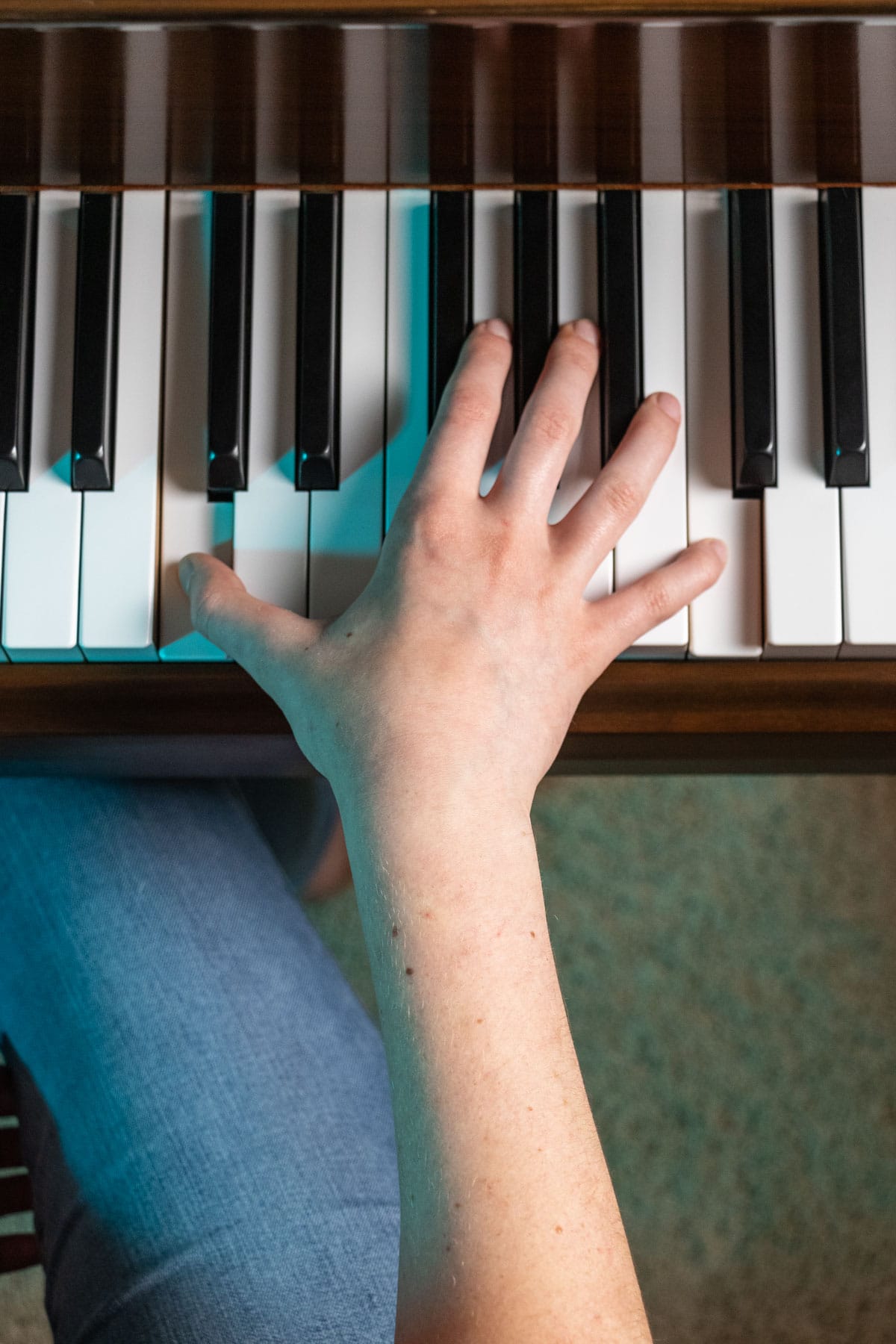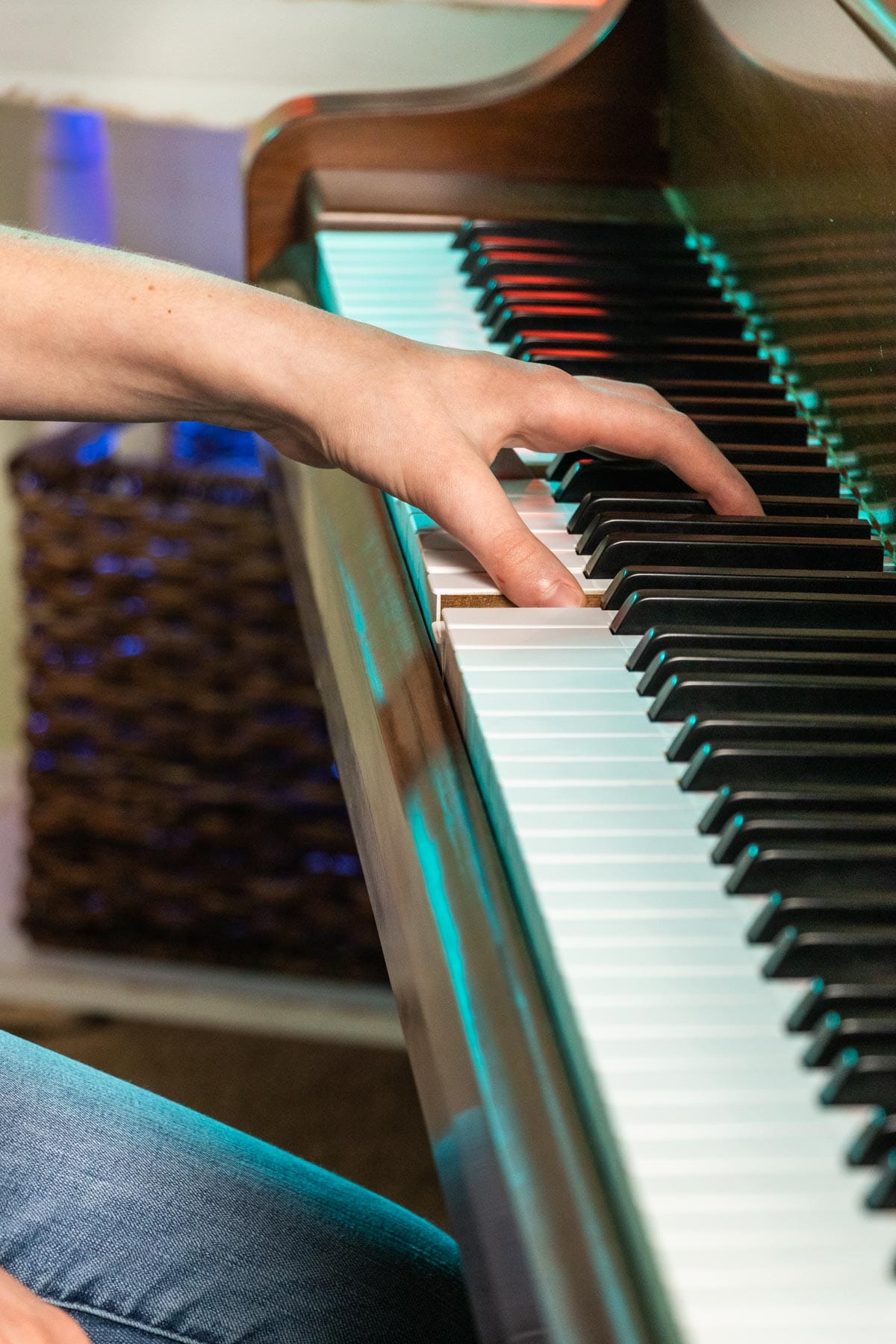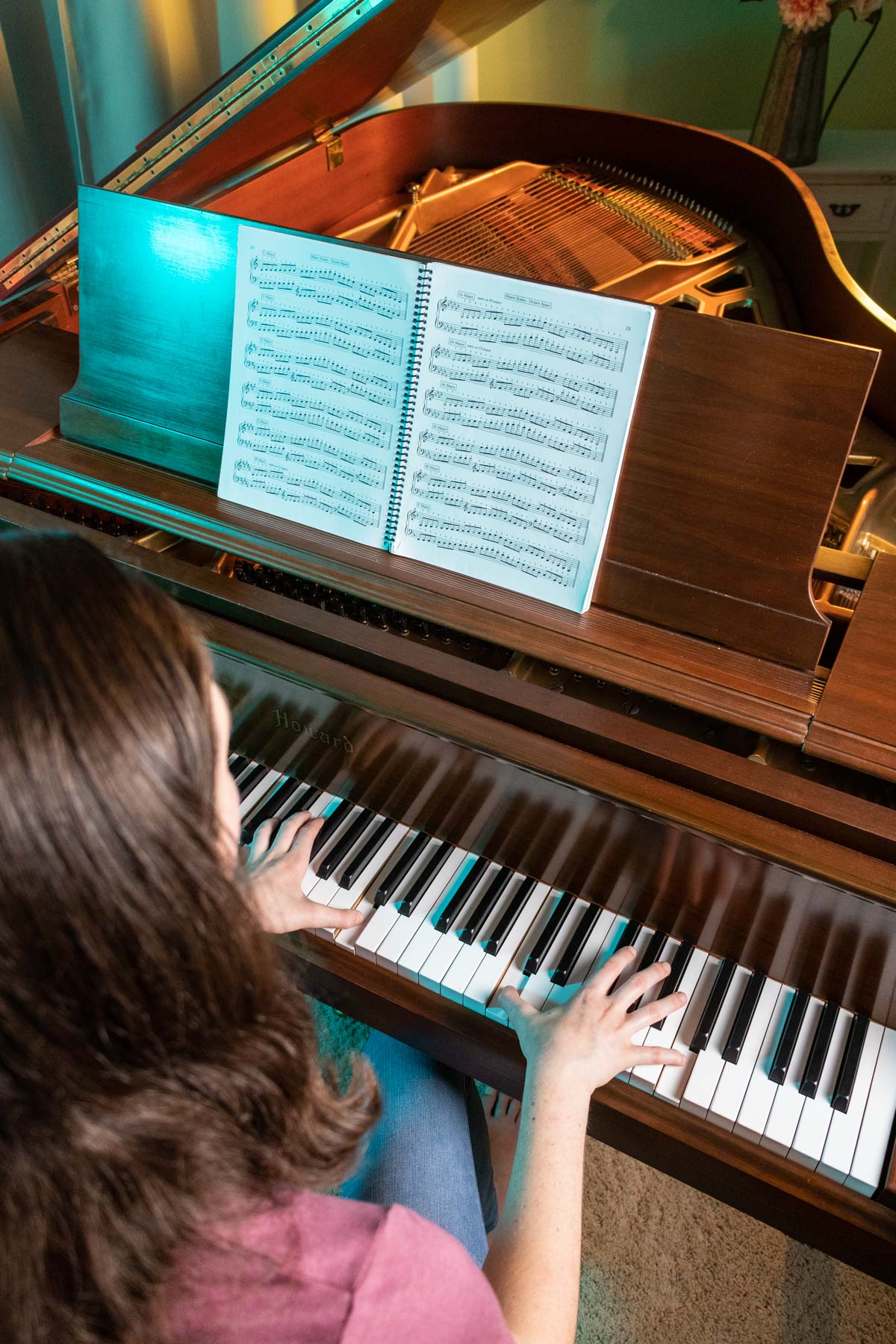Want to improve your octave technique? If you've been experiencing tension or difficulty when playing octaves, these great piano tips should help you learn how to practice octaves and how to play them well.
If you're looking for more technique tips, check out these articles about correct hand position and improving your rhythm.

About
Octaves are one of the largest intervals regularly used in piano music. An octave spans eight keys (seven unique notes), and is widely used in classical, jazz, contemporary, and pop music to add richness and fullness to a song.
Playing octaves well only comes with a good body awareness and control of the muscles in your fingers, hands, wrists, and forearms. You must be able to relax your hand, wrist, and forearm to prevent tension and injury, while maintaining great strength and control.
Let's dive into some tips for playing octaves well!

Types of Octaves
There are three main varieties of octaves you'll encounter in piano music. Each one requires a slightly different approach to play them well.
- Legato Octaves: typically used in scale passages or in melodies
- Loose Wrist Octaves: composed of fast, repeated notes
- Bouncing Octaves: loud, strong octaves that can jump across the keyboard
Playing Legato Octaves
Use a little pedal to connect the notes. Be careful not to use too much pedal, or the piece will sound slurred.
Practice the top notes and bottom notes independently. For example, practice the top notes that you play with finger 5 on their own and really make it sound melodic. Practice the lower notes with the thumb on their own, then play both octave notes together. Make sure not to be heavy or pounding with the thumb; think of it as an echo of the pinky.
Playing Fast, Repeated Octaves
Elevate the wrist slightly. This will give you a little more room to move for this technique.
Move your hand up and down from the wrist, not the elbow. This simple fluttering motion of the hand will keep your forearm from tensing up.
Use a very light touch. If you want to play octaves faster, you must press down the keys lightly, and focus on consciously relaxing your hand and wrist to prevent tension.
Slowly and subtly move your fingers up and down the keys as you play the octaves. This "in and out" motion engages your forearm and helps it work together with the wrist while alleviating stress throughout the hand and arm.
Playing Loud/Jumping Octaves
Maintain a firm hand and wrist. Move your fingers, wrist, and forearm as one unit, but don't tense up. Focus on keeping your hand relaxed but strong.
Use the octave as a springboard to bounce to the next note/chord/octave. Practice this bouncing technique by raising your hand slightly above the keyboard, then play the octave and let the energy carry your fingers to the next note, chord, or octave. This is especially valuable for pieces with large, quick jumps in the left hand, such as ragtime.

How to Practice
Play scales in octaves. Play one scale a day in octaves, then gradually build up your strength until you can play all 12 major and 12 minor scales in octaves in one sitting. Start at a slow tempo and build up speed.
Practice triads in octaves, and play four note chords. Solid and broken four note chords (in both regular and alternate patterns) build strength throughout your hand and keep your hand in an octave shape.
Play studies specifically designed to improve octave playing. Czerny's "Six Octave Studies for the Piano" is a well-known example.
Practice the thumb notes and pinky/fourth finger notes independently. For example, play all the thumb notes of the octave passage, then play all the pinky/fourth finger notes of the passage on their own. (The upper note typically should be louder to emphasize the melody.) This will enable you to better shape the melody without sounding heavy handed.
Practice Tips
General Tips
- Don't play octaves if you're a child with small hands. Practicing this technique when your hands are too small can cause injury and strain; wait to start until your hands are large enough. In the meantime, work on playing sixths, as this will help your hands strengthen and begin to stretch.
- Practice octaves daily. Spend 2-5 minutes on octaves every day during your practice session, and you'll definitely see improvement.
- Focus on keeping your hands, wrists, and forearms relaxed. The more you tense up, the harder it will be to play properly. Keep your fingers gently curved instead of flexing them.
- Position your fingers halfway up the white keys. Playing at the very edge of the white keys will make octave playing very difficult.
- Don't play with flat thumbs. Your thumb should hit the keys where the rounded part of the nail begins to flatten, or at approximately a 30° angle. Never allow your thumb joint to hit the keys.
- Make sure you're sitting with proper posture and that you're holding your hands correctly. If your body position or hand posture is incorrect, it will make playing octaves very difficult and uncomfortable.
- Play legato octaves with fingers 1 and 4 on black keys, and 1 and 5 on white keys. This is traditional because finger 4 is longer than finger 5, but you can change this depending upon the piece.

FAQs
Play scales and triads in octaves during your daily warmups. Also, play solid and broken four-note chords, as this keeps your hand in an octave position. Learn studies that work on octave technique.
While it's not possible to truly play octaves legato, you can get pretty close! Use fingers 1 and 4 on black note octaves, and fingers 1 and 5 on white note octaves. A little damper pedal will smooth any breaks in the sound for a simulated legato sound.
If you have small hands, practice stretching your hands by working on sixths, and working your way up to an octave. Don't let the thumb joint hit the keys when you play. To substitute, you can play a broken octave or omit one of the notes to make it easier.
Octaves definitely can be a challenging aspect of piano technique, but that doesn't mean they are impossible to master! With careful, consistent practice, you should be able to play any octave with strength and skill.
Conclusion
I hope these tips were helpful in showing you how to practice octaves! If you have any other questions, leave them in the comments below, and I'll be happy to help you. Please share any suggestions you have for practicing octaves, too; I'd love to hear them!
Other Piano Articles You'll Love
You must use the category slug, not a URL, in the category field.





Leave a Comment